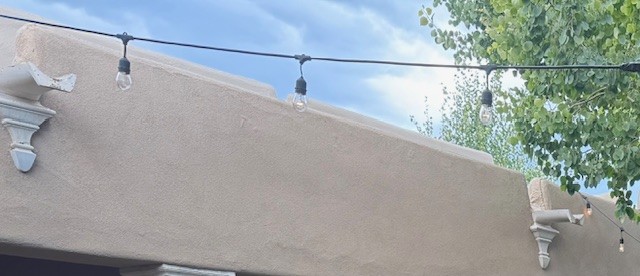The Beautiful Roof Detail That’s Been Protecting Adobe Homes for Centuries
I’ve always loved walking through Santa Fe neighborhoods after a summer rain. You’ll often hear the soft splash of water pouring from those little spouts along adobe rooftops—called canales—that spill like fountains into quiet courtyards or gardens. They’re one of the simplest, most functional, and unexpectedly beautiful details of traditional Southwest architecture.
But what are canales in adobe homes, really? Where did they come from? And why do we still use them today?
Let’s take a closer look.
A Design Rooted in History
Canales (pronounced cah-NAH-lays) are more than charming accents—they are centuries-old inventions rooted in Pueblo and Spanish Colonial architecture. Long before modern roofing materials, early adobe structures had flat roofs made from earth, mud, straw, and timber. Beautiful? Absolutely. But practical? Only if you had a way to get rainwater off the roof.
That’s where canales came in.
Builders created angled holes or wooden spouts that would allow rain and melted snow to drain off flat roofs—protecting thick adobe walls from erosion and minimizing structural damage from water pooling. It was elegant in its simplicity: dig a trench, direct the flow, and keep your home dry.
Even as roofing materials improved over the centuries, the canal design persisted—part cultural inheritance, part practical necessity. Today, you’ll see both traditional wood-carved canales and sleek modern versions lined in copper or galvanized steel, each one still honoring its architectural roots.
Why Canales Still Matter in Santa Fe
Let’s talk climate for a minute.
In a place like Santa Fe, where monsoon rains can roll in fast and heavy—followed by long dry spells—roofs need to handle sudden downpours without failing. Flat and low-sloped roofs are a hallmark of adobe and Pueblo-style homes, but they come with a challenge: standing water.
Canales are still one of the most effective, low-maintenance ways to:
-
Drain water quickly from flat roofs
-
Prevent leaks caused by pooling or trapped moisture
-
Protect stucco or adobe exteriors from staining and erosion
-
Maintain structural integrity during freeze-thaw cycles in winter
In other words, they don’t just look good—they help preserve everything that makes a Santa Fe home last.
Modern Adaptations, Same Timeless Look
While the purpose hasn’t changed, the materials often have. In newer homes, you’ll frequently see metal-lined canales—usually copper or stainless steel—that increase longevity and prevent wear. Some are square, others rounded, and some even include decorative flourishes that nod to local artisan styles.
You’ll find them positioned just under the roofline, usually above portal walkways or patio areas. When well designed, the flow is controlled and directed—either to a splash stone, a gravel bed, or a landscaped runoff channel. It’s a system that’s both intentional and beautiful, marrying form and function like few other architectural features.
What to Know as a Homebuyer
If you’re shopping for homes in Santa Fe or considering building your own adobe-style retreat, canales are more than just a charming touch—they’re an essential part of how these homes manage weather.
Some things I always encourage buyers to keep in mind:
-
Placement matters. Well-positioned canales should direct water away from walkways, doors, and walls.
-
Maintenance is easy but necessary. Leaves, debris, or ice can occasionally block drainage. A quick seasonal check keeps everything flowing.
-
They speak to authenticity. If you’re purchasing a Pueblo Revival or Territorial-style home, the presence of canales is often a sign of architectural integrity—not just an aesthetic copy.
I’ve had clients fall in love with homes in the Santa Fe hills not because of square footage or finishes—but because the light hit the vigas just right, and the canales were exactly where they should be.
A Detail Worth Celebrating
When you think of Santa Fe architecture, you probably picture earthy walls, blue-painted window trim, and a sky so big it humbles you. But look a little closer—especially just after it rains—and you’ll start noticing the delicate drip from those canales, gracefully protecting the same structures that have stood for generations.
They may not shout for attention, but like so much of life here, they’re rooted in heritage, shaped by the land, and quietly built to endure.
Next time you walk past an adobe home, glance up at those little spouts—and know you’re looking at hundreds of years of Southwest wisdom in one perfect, functional detail.



0 Comments